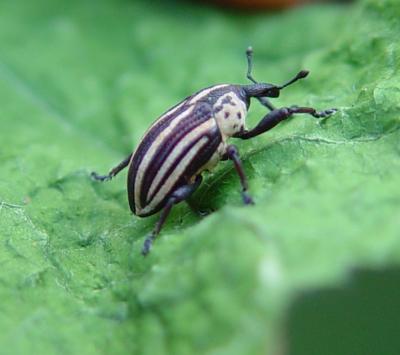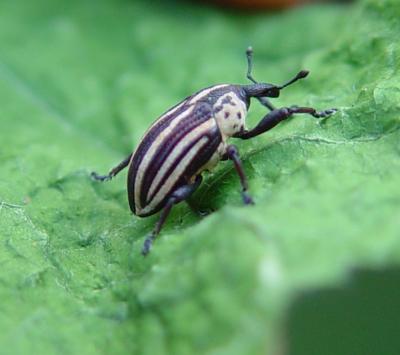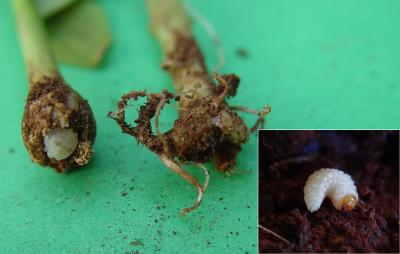


Striped bean weevil (Alcidodes leucogrammus)
Several species of snout weevils are commonly found feeding on bean leaves. Adult weevils chew the edges of the leaves cutting circular discs. Grubs of weevils live in the soil feeding on roots or may bore into the stem of the bean plant causing swellings or galls, as is the case of the striped bean weevil.
The adult of the striped bean weevil is 10-15mm long, dark brown in colour with whitish to yellowish longitudinal stripes. The females lay eggs in the soil near bean plants. Emerging grubs bore and feed inside the stem, causing cankerous swelling or galls. Fully-grown grubs are white, about 10mm long, have no less and are C-shaped. Pupation occurs in an earthen cell attached to the plant. Plants attacked by grubs of this weevil show stunted growth, lodging, and eventually may die. The stem of the plant breaks easily during harvesting.
In Kenya, striped bean weevil only occurs occasionally, and to a minor extent and control measures are usually not required.
Beetles can be collected manually and destroyed. Plants damaged by the grubs can be removed and the grubs destroyed.
- Collect weevils manually and destroy them
- Remove plants damaged by grubs and destroy the grubs
